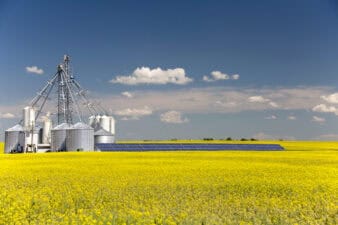In August Crescent Point Energy Corp. (TSX:CPG)(NYSE:CPG) announced what many had been expecting—a 57% cut to their dividend. While the dividend cut was expected, many were not expecting a cut so large; most estimates were in the 20-30% range.
The dividend cut brought Crescent Point’s dividend yield down to the 7% region (from nearly 15%). At current prices, the dividend yield is about 7.4%, which is safely within the historical range and far from the double-digit levels that marked the last cut.
Does this mean Crescent Point’s dividend is safe? Ultimately, Crescent Point’s previous cut was done to protect the balance sheet and to avoid adding what Crescent Point says would have been $500 million in debt. Crescent Point will take the same factors into consideration when looking at the current dividend, and while they could always decide to be conservative and slash it, the company does have the means to pay it without hurting the balance sheet.
Crescent Point’s debt levels are reasonable
Crescent Point has done a fairly good job so far in protecting its balance sheet and maintaining liquidity through a historic plunge in oil prices. The company has a $3.6 billion credit facility with several banks, which includes an option to boost the size by as much as $500 million under certain conditions.
As of September 2015 (the last earnings release), Crescent Point had $2.2 billion drawn on the facility, leaving $1.4 billion unused. Crescent Point also has $2.2 billion in additional long-term debt, but the vast majority of this debt does not mature until after 2019.
Overall, this gave Crescent Point a net debt of about $4.2 billion as of September 30, and TD Bank analysts expect this to be about $4.6 billion by year end. This would give Crescent Point a net-debt-to-cash flow ratio of 2.5 (net debt is 2.5 times cash flow), which is very reasonable considering Crescent Point’s peer group has net debt of about 3.9 times cash flow in 2015.
This means that in a worst-case scenario Crescent Point could rely on its balance sheet to help fund its dividend, which it may do if the amount required is small and if it is seen as being temporary.
Crescent Point won’t have a cash shortfall if prices stay at current levels
Previously, Crescent Point was willing to cut the dividend because the company was concerned it could add as much as $500 million in debt.
Fortunately, it doesn’t seem like this would be the case if oil prices stay in $30-35 /bbl range for the year.
Crescent Point is heavily hedged with 34% of its 2016 production hedged at $83.00 per barrel. In addition to this, Crescent Point has the option of crystallizing its hedging gains from 2017 to 2018 and essentially moving them forward into this year, which will lead to proceeds of over $130 million and effectively result in about 50% of Crescent Point’s oil production being hedged at much higher prices in 2016.
The end result is that if oil prices were to average $35/bbl for the year, Crescent Point can expect cash flow from operations of $1.37 billion (according to TD Bank analysts, and including the $130 billion in additional hedging proceeds).
If the company spends capex of $950 million (on the low end of its range), it would have free cash flow of $420 million. The current dividend is $606 million, which means it would only need to draw $186 million from its credit facilities to fund the dividend.
The company may not be willing to do this if it saw oil prices as staying in the low to mid-30s for the long term, but since long-term prices at these levels are not sustainable, the company may see these prices as being short term and may be willing to use its balance sheet to pay the dividend.







